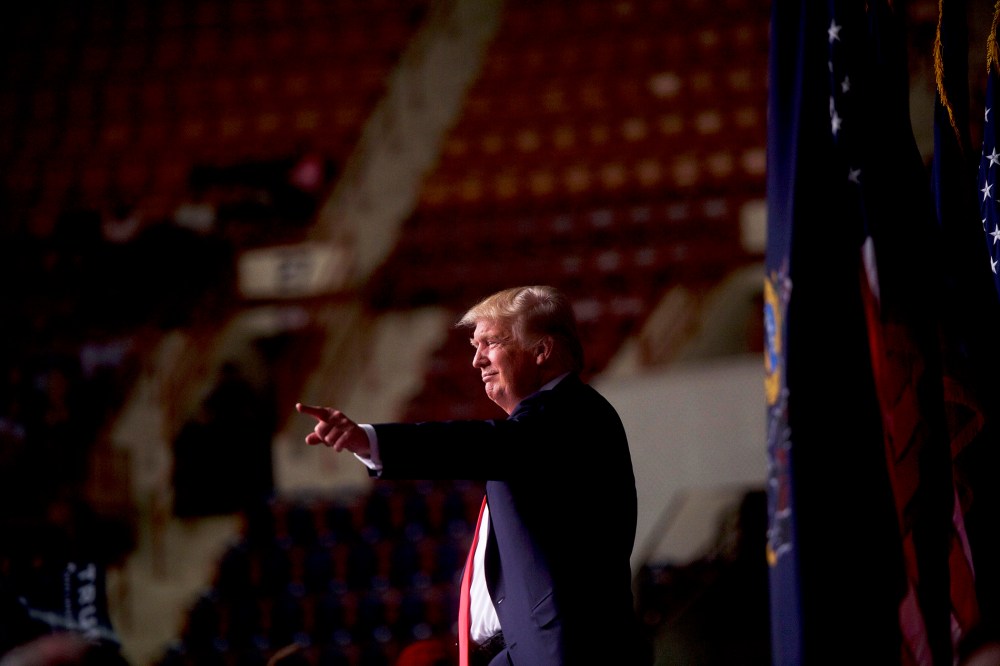Donald Trump currently has at least 846 delegates, according to the NBC News tally, and he can still clear the magic number of 1,237 during the primary season. Doing so would prevent the open convention that Ted Cruz and the Stop Trump movement are banking on. Here’s what it would take:
April 26
- Pennsylvania (17 pledged delegates, 54 unbound): Trump leads in every poll and is on pace to win the 17 pledged delegates that will go to the statewide winner. The 54 unbound delegates will be selected in the primary and will be free to vote for whomever they want at the national convention. Even if they declare a candidate preference before the convention, they will not be formally bound to it in any way. That said, a large number of them are already committing publicly to supporting whichever candidate wins their congressional district – or at least to weighing the district result heavily in their decision. Trump may have trouble in a few districts around Philadelphia, but his wide poll lead suggests he’s on course to run up wide margins across most of the state. Practically speaking, it may be very hard for an unbound delegate who wins his or her slot by vowing to honor the results in his or her district to wiggle out of that commitment in the face of a Trump landslide. Target: 17 pledged delegates plus 36 unbound
- Maryland (38 delegates): Trump leads the state by a wide margin and should easily win the 14 delegates that come with a statewide victory. The other 24 are given out by congressional district – three to the winner of each of the state’s eight districts. Polling suggests Trump may lose to John Kasich in the D.C. metro area. Target: 32 delegates
- Delaware (16): It’s a winner-take-all state and Trump leads big. Target: 16
- Connecticut (28): If Trump can break 50 percent statewide, he should sweep the state (provided he doesn’t finish behind Kasich in the 4th Congressional District, which includes the state’s affluent and highly educated Gold Coast). Currently, Trump is running at 48 percent statewide. Target: 28
- Rhode Island (19): Demographically, this state is a perfect fit for Trump and should produce one of his largest margins. The bad news: Its system for delegate allocation is highly proportional, limiting his potential gains. Target: 10
Leaving aside the Pennsylvania unbound delegates, if Trump hits these numbers he’ll end April with at least 949 delegates. That would bring us to:
May 3
- Indiana (57): It’s hard to overstate the importance of this state. This is because a very small shift in the vote could produce a major shift in delegates. This has to do with how Indiana distributes delegates: 30 to the statewide winner, plus three to the winner of each of the state’s nine congressional districts. So, for example, if Trump were to eke out a narrow statewide win while carrying six districts, he would net 48 delegates. But shave a few points off his total and give him a narrow loss and his delegate haul could be in the single digits. The potential swing here is huge, and the state’s demographics suggest it could be the closest contest left on the board. A Trump win here may be essential to clearing 1,237 cleanly. Target: 48
May 10
- West Virginia (34): Based on demographics, Trump should crush it here. The catch is that the state’s absurdly complicated ballot could mean that Trump voters fail to vote for Trump delegates. Otherwise, West Virginia looks like a Trump cakewalk. Target: 30
- Nebraska (36): A winner-take-all primary smack in the middle of what has been Cruz’s strongest part of the country. A Trump win here would be an upset and would suggest he’s well on his way to 1,237. But expect a Cruz victory. Target: 0
May 17
- Oregon (28): All 28 delegates are awarded proportionally based on the statewide primary result. Target: 12
May 24












